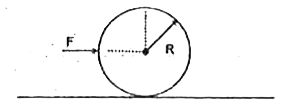What is friction? In which direction does it apply?
Step-by-Step Solution
1. Definition of Friction:
Friction is a force that opposes the relative motion of two surfaces that are in contact. It arises due to the interactions between the microscopic rough surfaces of the objects.
2. Understanding the Concept:
When you try to move an object, like a box on the ground, the surface of the ground and the surface of the box have tiny rough areas that interlock. This interlocking creates resistance to the motion of the box.
3. Direction of Friction:
The direction of the frictional force is always opposite to the direction of the applied force or the motion of the object. For example, if you push the box to the right, the frictional force will act to the left, opposing your push.
4. Summary of Friction's Characteristics:
- Friction is a force that opposes motion.
- It acts in the opposite direction to the applied force or the direction of motion.
- It occurs between two surfaces in contact.
Friction is a force that opposes the relative motion of two surfaces that are in contact. It arises due to the interactions between the microscopic rough surfaces of the objects.
When you try to move an object, like a box on the ground, the surface of the ground and the surface of the box have tiny rough areas that interlock. This interlocking creates resistance to the motion of the box.
The direction of the frictional force is always opposite to the direction of the applied force or the motion of the object. For example, if you push the box to the right, the frictional force will act to the left, opposing your push.
- Friction is a force that opposes motion.
- It acts in the opposite direction to the applied force or the direction of motion.
- It occurs between two surfaces in contact.
Topper's Solved these Questions
Similar Questions
Knowledge Check
Rahul is pushing a heavy sofa in the north-east direction. In which direction would frictional force act on the sofa?
ANorth-eastBSouth-eastCNorth-westDSouth-westA force F is applied horizontally on a cylinder in the line of centre as shown in the figure. The cylinder is on a rough surface of coefficient of fricition μ. The direction of the friction force acting on the cylinder will be
 Ain the direction of FBzeroCin opposite direction of FDcan not be ascertained
Ain the direction of FBzeroCin opposite direction of FDcan not be ascertainedIf the direction of applied force and direction in which an object moves are perpendicular to each other then:
Apositive work is doneBno power is releasedCno energy is releasedDno work is done
What are the factors on which friction is not dependent ?
View SolutionWhat are the factors on which friction is not dependent ?
View SolutionA particle of mass m rests on a horizontal floor with which it has a coefficient of static friction μ. It is desired to make the body move by applying the minimum possible force F. Find the magnitude of F and the direction in which it has to be applied.
View SolutionA blocky of mass m rests on a horizotal floor with which it has a coefficient of static friction μ. It is desired to make the body move by applying the minimum possible force F. Find the magnitude of F and the direction in which it has be applies.
View SolutionStatic Friction|| Direction and Magnitude
View Solution
